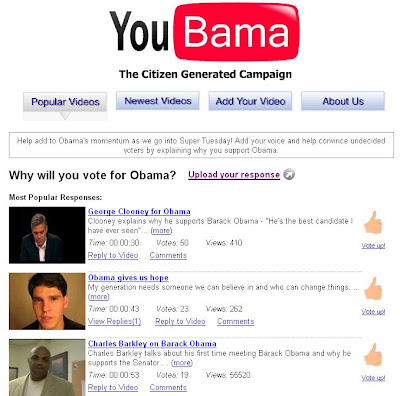From the mail that AdLab readers and PR people have sent in over the past couple of weeks:
Prudent People Brag: "According to a recent study conducted by the
Mindset Media, people who report that they always pay their credit card balances in full each month, [...] to be far less modest than the rest of the population at large -- "Modesty 1’s," who are, perhaps, unable to resist bragging about their highly responsible credit habits.
JunkieAd.com creator would like to let the world know about another blog collecting
creative advertising.
USA Today's Media Lounge
accepts submissions from ad bloggers.
If I understand the terminology correctly,
WebCollage.com lets downstream sales partners
reuse the rich interactive
functionality of the mothership site with less friction.
Spot Runner (one of the ad automation companies) has acquired GlobeShooter, a network of 1,200 independent filmmakers, videographers, producers and production companies across the U.S.
Flow automatically
tracks the design process from idea to end result and manages assets and applications for the most complex workflows.
Hammerhead agency promotes itself with
this video.
Luke Sullivan's legendary "Mr.Whipple"
guide to great ads is out in its second edition.
For dessert, some spam: "The NOKIA Electronic Email Promo,was established 1970 by the Multi-Million groups and now supported by the Economic Community for West African States (ECOWAS), United Nations Organization(UNO), United Kingdom(UK) and the European Union (EU) was conceived with the objective of human growth, educational, and community development."


















